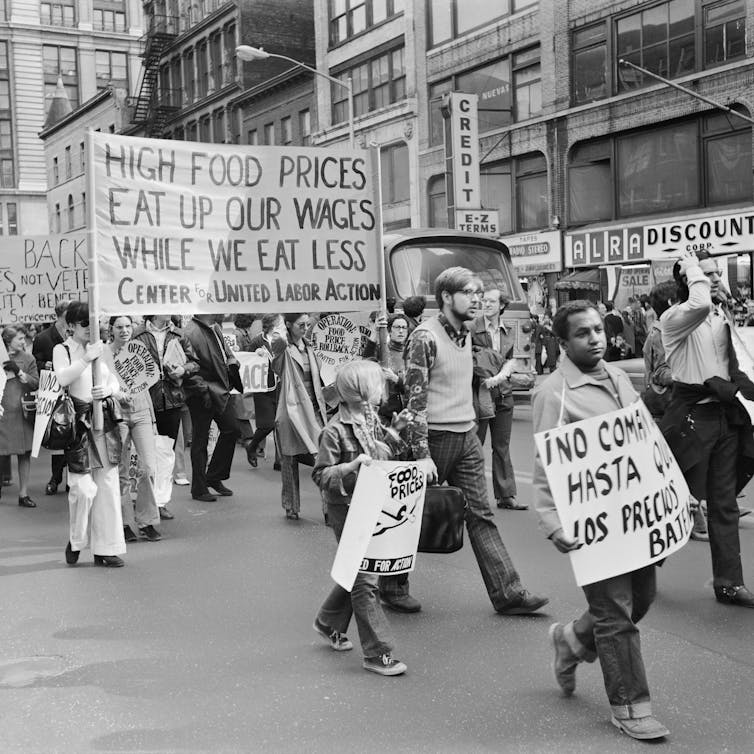Isaac Gross, Monash University
After several years of steadily declining, the Australian dollar staged a meaningful recovery in 2025, culminating in a two-cent rally over the past month.
Since the start of the year, the value of the Australian dollar has risen by more than 6% against the US dollar, reversing a sizeable chunk of the falls that occurred through 2022–24.
But is the most recent jump the start of a new trend for 2026? Or just another blip?
Why US rate cuts move the Australian dollar
Last week the US central bank, the Federal Reserve, cut interest rates for the third time in a row – down by 0.25 percentage points to around 3.6%, its lowest level in nearly three years.
That decision came just after the Reserve Bank of Australia (RBA) kept rates on hold at 3.6%. The RBA governor, Michele Bullock, also signalled more rate cuts here are unlikely for “the foreseeable future”.
In the days immediately after the US Fed’s decision, the Australian dollar did what textbook economics would predict: it rose, briefly hitting a three-month high of around US$0.667.
The link between US monetary policy and the Australian dollar is often misunderstood.
A US rate cut does not directly make Australia richer or poorer. Instead, it alters global financial conditions in ways that matter for currencies.
The most straightforward way US decisions affect us here in Australia is with interest-rate differentials. That means when US interest rates fall relative to Australian rates, holding US dollar assets (such as US bonds) becomes slightly less attractive. That can reduce demand for the US dollar and support overseas currencies like ours.
There is also a broader “risk appetite” effect. When the Fed lowers its key interest rate, markets often interpret that as being supportive of global growth and financial conditions, at least initially. That can boost demand for riskier assets – including shares in Australian companies and the Australian dollar itself.
Finally, markets react not just to what the Fed does in a given meeting, but to what it signals about the future.
Last week’s rate cut came with a relatively cautious message about further rate reductions. That limited the downside for the US dollar and helps explain why the Australian dollar’s rally faded fairly quickly, rather than accelerating.
Pressure on the US Fed for more cuts
However, this outlook may change quickly after US President Donald Trump said he was close to appointing a new Federal Reserve chair. This looks likely to be announced unusually early in the new year.
Trump has been outspoken in calling on the Federal Reserve to cut rates more aggressively.
While presidents have occasionally expressed views about monetary policy, explicit pressure can affect market perceptions of central bank independence – and perceptions matter in currency markets.
If the next chair is less willing or able to resist political pressure and cuts rates further in the face of still-high inflation, that could weaken the US dollar further.
For the Australian dollar, this could cut both ways.
A weaker or more volatile US dollar could led to more support for the Australian dollar. But heightened global uncertainty can also trigger bouts of risk aversion that tend to hurt cyclical currencies such as Australia’s.
What will the RBA do if inflation persists?
Domestic monetary policy will also matter. The Reserve Bank influences the exchange rate primarily through expectations about future interest rates.
If inflation remains high and the RBA is forced to consider a rate increase, the interest rate differential would move in Australia’s favour. That would provide underlying support for the currency.
On the other hand, if growth slows and interest rates are lowered here, the support for the Australian dollar would erode, making it cheaper – especially if global economic conditions are also deteriorating.
Importantly, currency markets move on expectations, not decisions. Even small changes in how markets price the RBA’s likely path can have noticeable effects on the dollar.
Iron ore is still king
Finally, there is the price of iron ore. Despite the growing sophistication of Australia’s economy, iron ore prices remain a central driver of the country’s terms of trade – the prices we receive for exports relative to what we pay for imports.
When iron ore prices rise, export income increases, national income improves, and the Australian dollar tends to strengthen.
When prices fall, the reverse occurs, and a weaker exchange rate helps cushion the economy by making other exports more competitive.
If iron ore prices remain strong in 2026, they would reinforce the forces supporting the currency. If they decline sharply – for example, due to weaker Chinese demand – that would put downward pressure on the dollar, regardless of what central banks are doing.
The Australian dollar’s 2025 rebound reflects a confluence of factors: a softer US dollar, resilient domestic conditions, and relatively supportive commodity prices. Whether that recovery extends into 2026 will depend on how those forces evolve.
So keep an eye on US monetary policy, the RBA’s inflation challenge, and iron ore prices. Together, those three factors will determine the value of the Aussie dollar in the year ahead.![]()
Isaac Gross, Lecturer in Economics, Monash University
This article is republished from The Conversation under a Creative Commons license. Read the original article.

